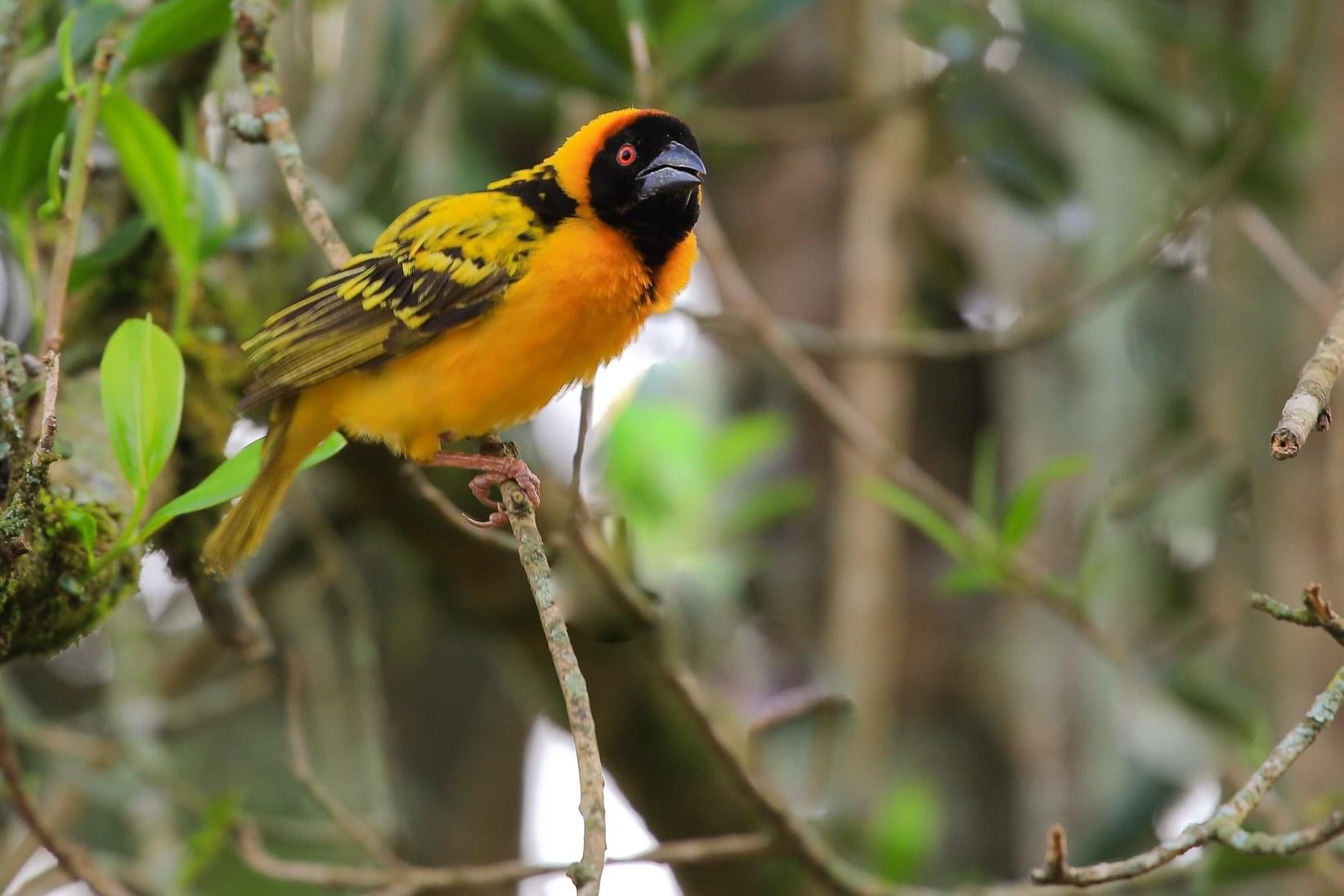 Bigodi wetland sanctuary, Uganda, 2017.
Bigodi wetland sanctuary, Uganda, 2017.
The Village Weaver is one of the most common, widespread weaver species. It is larger than most weavers, with red eyes in both sexes and a heavy black bill. The breeding male has the head mainly black, the nape, hindneck and breast below the black throat are chestnut. The back is spotted yellow. The breeding female is yellow below, and whiter on belly. The non-breeding birds are duller than the breeding female.
The Village Weaver inhabits bushy savanna, riverine woodland, wetlands, cultivated areas, rural villages, urban and suburban gardens, and villages and clearings in the forest. It is frequently associated with human habitation in west and central Africa. It is absent from arid regions, dense forests, and miombo woodland.
Its diet is seeds, including grass seeds and cultivated cereals. It is regarded as a pest in rice-growing areas, and also damages maize, sorghum and durra crops. It also feeds on fruit, nectar, and insects, such as beetles, ants, termites and their alates, grasshoppers, mantids, caterpillars, and bugs. It forages by gleaning vegetation, including tree trunks.
The Village Weaver is gregarious, being found in large flocks and in the non-breeding period joins large communal roosts.
It is highly colonial, with more than 200 nests in a single tree and colonies in excess of 1000 nests. The Village Weaver is polygynous, with up to five females simultaneously on the territory of a male, and up to seven during a season. Females may change mates in a season. Larger colonies appear to be more attractive to females, with a higher proportion of females per male.
When females enter a colony, males hang below their nest entrances while giving nest-invitation calls and flapping their wings to show the yellow underwings. The nest is spherical, sometimes with a very short entrance tunnel. The nest is woven by the male within a day, generally from strips torn from reed or palm leaves.
The male often includes a ceiling layer of broad leaves. The female lines an accepted nest with leaves, grass-heads and some feathers. Nests are suspended from drooping branches. A single male may build more than 20 nests in a season, and unused or old nests are regularly destroyed to make space for new nests. Empty nests may be occupied by other animals, including snakes, wasps, mice and bats, and nests may be used for breeding by a wide variety of species including Cut-throat Finches.
The eggs are white, pale green or blue, either plain or variably marked with red-brown speckling. Incubation is by the female only, for about 12 days. The chicks are usually fed by the female alone, but males in some parts help. Female Village Weavers recognize their own egg pattern, which is constant throughout her life, and discriminate against non-matching eggs. Nest predators include snakes, especially boomslang Dispholidus typus, monkeys and baboons, crows and raptors.
The longevity record is 14 years in the wild.
#Birdifeastafrica
#Earthshots
#Visitugandarwandatanzania.
Comments
1